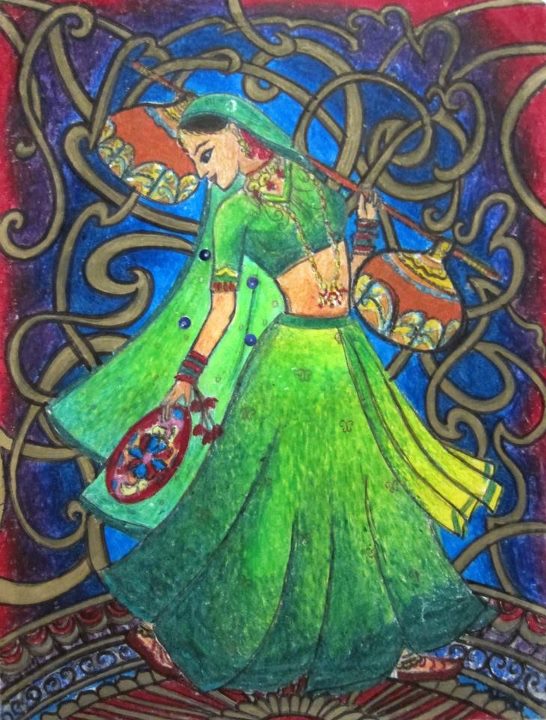
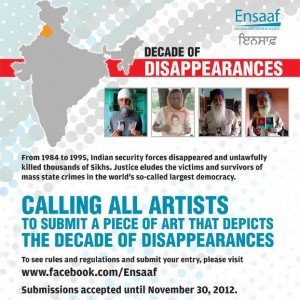 Following the assassination of Prime Minister Indira Gandhi in 1984, the Indian government employed orchestrated pogroms against Sikhs. Mobs, equipped with weapons, kerosene, and the addresses of Sikh homes, chanted “khoon ka badla khoon se lenge! (Blood for blood)” as they hunted innocent Sikhs, and those protecting Sikhs, throughout Delhi. Suddenly, Sikh Indian citizens were left stranded in their homeland with no protection and no exercise of control by the Indian government.
Following the assassination of Prime Minister Indira Gandhi in 1984, the Indian government employed orchestrated pogroms against Sikhs. Mobs, equipped with weapons, kerosene, and the addresses of Sikh homes, chanted “khoon ka badla khoon se lenge! (Blood for blood)” as they hunted innocent Sikhs, and those protecting Sikhs, throughout Delhi. Suddenly, Sikh Indian citizens were left stranded in their homeland with no protection and no exercise of control by the Indian government.
“Murderous gangs of 200 or 300 people led by leaders, with policemen looking on, began to swarm into Sikh houses, hacking the occupants to pieces, chopping off the heads of children, raping women, tying Sikh men to tires set aflame with kerosene, burning down the houses and shops after ransacking them. Mobs stopped buses and trains, in and out of Delhi, pulling out Sikh passengers to be lynched to death or doused with kerosene and burnt alive. In some areas, the Sikh families grouped together for self-defense. The police officials then arrived to disperse them, by force when the persuasion did not work. In other areas, the police searched the houses for weapons including ceremonial daggers, and confiscated them before the mobs came. Over the next five days, nearly 3,000 Sikhs were killed.” -Reduced to Ashes, pg. 42
Guestblogged by Mewa Singh
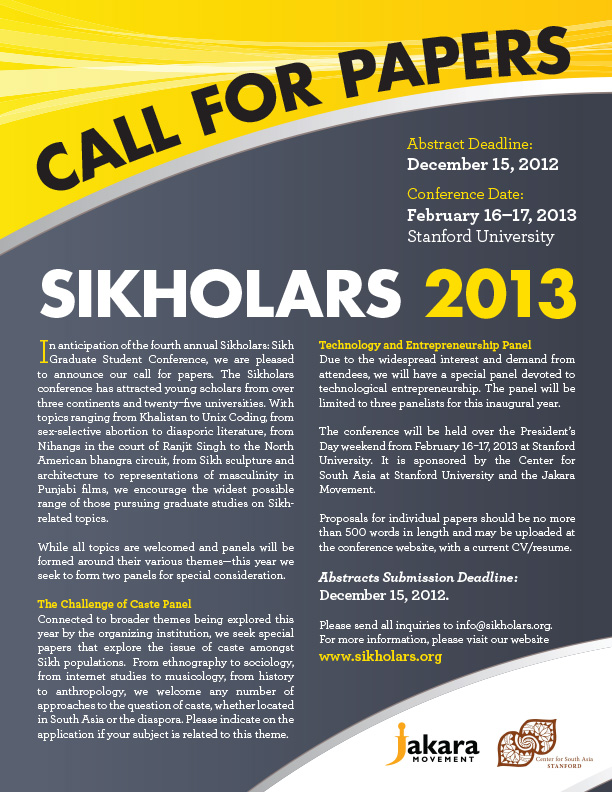 Few events are as anticipated as the annual Sikholars conference, held annually in the Bay Area. Now returning for the fourth year, the event continues to grow, generate new interest, and excite Sikh sangats from the Bay Area and beyond. A showcase for young Sikh scholars and others working on Sikh-related topics, the venue provides an intellectual space for engagement, discussion, and debate.
Few events are as anticipated as the annual Sikholars conference, held annually in the Bay Area. Now returning for the fourth year, the event continues to grow, generate new interest, and excite Sikh sangats from the Bay Area and beyond. A showcase for young Sikh scholars and others working on Sikh-related topics, the venue provides an intellectual space for engagement, discussion, and debate.
The conference has already announced its “call for papers”:
In anticipation of the fourth annual Sikholars: Sikh Graduate Student Conference, we are pleased to announce our call for papers. The Sikholars conference has attracted young scholars from over three continents and twenty–five universities. With topics ranging from Khalistan to Unix Coding, from sex-selective abortion to diasporic literature, from Nihangs in the court of Ranjit Singh to the North American bhangra circuit, from Sikh sculpture and architecture to representations of masculinity in Punjabi films, we encourage the widest possible range of those pursuing graduate studies on Sikh-related topics.
The deadline to apply to present is December 15, 2012.
The event is being hosted by Stanford University’s Center for South Asia and the Jakara Movement.
Co-blogged by Sundari and AmericanTurban
Last week, in the context of the significance of California’s 9th Congressional District to Sikh Americans, we sent the major candidates of California’s 9th Congressional District — incumbent Representative Jerry McNerney and challenger Ricky Gill — a questionnaire to learn more about their positions about Sikh American-related issues (see previous post here). Both candidates responded. However, the nature of the responses received were quite different.
Rep. Jerry McNerney’s campaign responded to the questionnaire and Ricky Gill’s campaign declined to answer. As we had stated in our earlier post, both responses will be printed verbatim and are below.
This past weekend, I attended the second annual Sikh Feminist Conference at the University of British Columbia in Vancouver. A friend posted a concise review of the conference here which I would encourage you to read. I’ll just reiterate two points made – the first being the discussion around whether the western concept of Feminism fits within Sikhi. What does it mean to call oneself a Sikh Feminist or even a Male Sikh Feminist? Many participants at the conference felt the words “Sikh” and “Feminist” were redundant and that it was not necessary for us to try to mold to western definitions of feminism when our own faith clearly defines the concept of [gender] equality. On the other hand, others argued that the word is powerful enough to raise and question the issue of patriarchy that continues to exist within the community. The discussion reminded me of a similar conversation that was had at the Faith and Feminism panel, featuring Sikh women, which took place last year in NYC. About the panel discussion, the author writes,
The core values in Sikhism, particularly the human rights element, were what informed [the panelist’s] views on issues, including women’s rights. She has taken the word “feminism” out of the equation, and transplanted the values of it back into Sikhi, and reminded us that anyone who adheres to the principles of Sikhism and to the words of the Guru Granth Sahib has many labels, feminist, humanist, and activist are just some of them.
The second point is the important link between theory and practice within the Sikh community. I want to highlight this in two ways. The first being that while it has been established that the Gurus emphasized living in an eco-friendly way, it’s clear that as a community we are still working to close the gap – from melas to gurdwaras to within our own homes – our practice of living in an eco-friendly way could use some improvement. EcoSikh sponsored the Sikh Feminist conference and it’s presence was felt very thoughtfully throughout the day (biodegradable utensils, compost, recycling etc!) and it was inspiring to see our community not just talk about it in theory, but actually put it into practice.
Another discussion was around the concept of izzat or honor, whether it impacts both men and women, how it manifests differently for men and women and why it continues to be a topic of discussion when theoretically, our Gurus gave us the guidance and tools to live in an egalitarian society. The concept itself has been one of discussion on our blog too – particularly around what it means to a family and to a community. We are once again reminded of this issue with the recent news of Baljinder Kaur, a pregnant woman from Yuba City who was arrested over the weekend, just before the Sikh Women’s conference, for apparently killing her mother-in-law.
Co-blogged by Sundari and AmericanTurban
 Of recent and recurring discussion on The Langar Hall and American Turban has been the election race in California’s 9th Congressional District. For Sikh Americans, this district’s race is significant.Located in northern California, the 9th Congressional District contains America’s oldest and one of its largest Sikh American communities. The oldest Gurdwara in the United States (which only a couple of weeks ago celebrated its centennial anniversary) is located in this District in Stockton, California. America’s first Asian American and Sikh American member of Congress, Dalip Singh Saund, once resided in this area, and one of the candidates currently running is himself a Sikh American.Given the unique character of the District, we are interested to know the thoughts of the main candidates of the district on the issues affecting their current and potential Sikh American constituents, many of whom have been active in supporting each of the candidates. It is our plan to publish these answers by each candidate to learn more about their positions on issues affecting Sikh Americans.With election day in the US nearing, we have asked the main candidates — incumbent Representative Jerry McNerney and Republican challenger Ricky Gill — to offer their thoughts on Sikh American issues. We are aware that important concerns of the general public on issues like jobs, healthcare, or social issues are often already asked of the candidates, but that their positions on Sikh American issues are not asked of them. Accordingly, these questions reflect Sikh American concerns that do not get the same attention from mainstream media.
Of recent and recurring discussion on The Langar Hall and American Turban has been the election race in California’s 9th Congressional District. For Sikh Americans, this district’s race is significant.Located in northern California, the 9th Congressional District contains America’s oldest and one of its largest Sikh American communities. The oldest Gurdwara in the United States (which only a couple of weeks ago celebrated its centennial anniversary) is located in this District in Stockton, California. America’s first Asian American and Sikh American member of Congress, Dalip Singh Saund, once resided in this area, and one of the candidates currently running is himself a Sikh American.Given the unique character of the District, we are interested to know the thoughts of the main candidates of the district on the issues affecting their current and potential Sikh American constituents, many of whom have been active in supporting each of the candidates. It is our plan to publish these answers by each candidate to learn more about their positions on issues affecting Sikh Americans.With election day in the US nearing, we have asked the main candidates — incumbent Representative Jerry McNerney and Republican challenger Ricky Gill — to offer their thoughts on Sikh American issues. We are aware that important concerns of the general public on issues like jobs, healthcare, or social issues are often already asked of the candidates, but that their positions on Sikh American issues are not asked of them. Accordingly, these questions reflect Sikh American concerns that do not get the same attention from mainstream media.The questions that we have sent to the campaigns of Jerry McNerney and Ricky Gill are below the fold, and on Tuesday, October 30, we will publish the responses from each campaign.
Guest blogged by Simran Jeet Singh
This past week, I visited a liberal arts college in Pennsylvania to introduce undergraduate students to the Sikh experience in America. I was pleasantly surprised to see that the professor had assigned Naunihal Singh’s piece from the New Yorker – “An American Tragedy” – one of the most insightful and well-written pieces published in the immediate aftermath of Oak Creek.
The professor had asked the students to submit short reflections on the shooting, and in reviewing their essays, I was struck by the consistent refrain that we have heard all too often: “If Wade Michael Page had only known that he was attacking Sikhs instead of Muslims…”
In other forums, I have discussed some problems with the framework of “mistaken identity,” including the implication of a “correct identity” to be targeted, the displacement of accountability, and the freezing of hate-violence within particular moments of time.
While I still stand by these arguments, I think there is a much more fundamental problem in our application of this idea to the shooting at the gurdwara in Oak Creek. We do not yet know Page’s specific intentions, yet we continue to assume that he actually intended to attack Muslims. For some reason, we have not seriously entertained the possibility that Page entered the gurdwara fully intending to kill Sikhs.
“While Sikh American women do a lions-share of organizing and executing the business of the Sikh community, their experiences of faith, family, and community are under-represented in art, literature, and scholarship. In fact, the experience and image of a Sikh woman is obsolete and – in most cases – invisible in the North American milieu. The modern landscapes and political and social influences that shape Sikh women’s lives as well as the subsequent paths they take have yet to be understood, documented, shared and absorbed by our cultural psyche.”
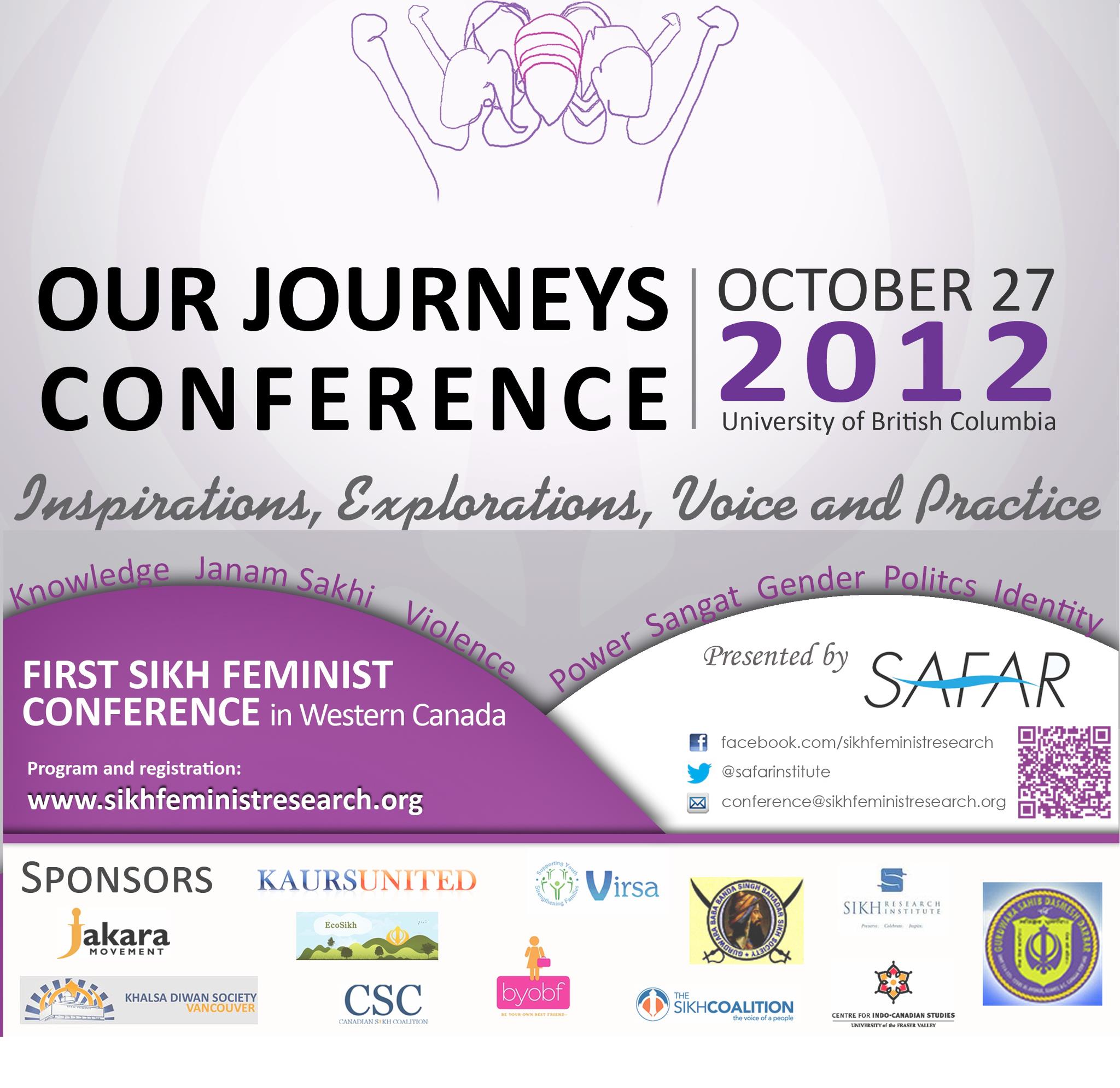 The above description is an excerpt from the “Sikh American Women and Their Love Stories Collection” presentation that will be taking place at this year’s Our Journeys conference, hosted by the Sikh Feminists Research Institute on October 27th. This conference series, the first of its kind, provides a platform to explore the intersections of Sikhi and gender. The goal is to promote research around Sikh feminist issues, heighten participation in critical discourse, promote alliance building and develop partnerships between academic and community organizations.
The above description is an excerpt from the “Sikh American Women and Their Love Stories Collection” presentation that will be taking place at this year’s Our Journeys conference, hosted by the Sikh Feminists Research Institute on October 27th. This conference series, the first of its kind, provides a platform to explore the intersections of Sikhi and gender. The goal is to promote research around Sikh feminist issues, heighten participation in critical discourse, promote alliance building and develop partnerships between academic and community organizations.
Often times, conversations about Sikhs, Sikh issues and the Sikh identity start and end with the Sikh male identity. While this conversation is acutely relevant in the climate of ignorance and discrimination that we live in, it’s also critical that we have conversations that include, are about, and are led by Sikh women.
Having attended last year’s inaugural conference, I look forward to engaging once again in a conversation around women’s issues within the Punjabi/Sikh framework. It’s exciting that we have a platform to celebrate the growth and development of the Sikh feminist voice.
Guestblogged by Mewa Singh
Applications are out and will soon be due. Need some assistance? Then here is a service for you!
Here are the Top 5 Reasons You should Use the Jakara Movement’s Sikhiya Service:
- Save money – there are a number of professional services on the market that provide personal statement assistance and help. Websites like accepted.com charge in the thousands of dollars for this type of service. You’re getting it for free!
- Expert Help – Get help from other Sikhs that have successfully already gone through the process. They will edit your writing and share admission tips.
- Fast Turnaround – Most drafts are sent back within 48 hours. Can’t get much faster than that!
- Confidential – Confidentiality is completely respected. After you upload your draft, your name and other personal information is removed before being sent to the editors. All editors also sign confidentiality notes to respect the privacy of you and your writing.
- Pay It Forward – The idea of this type of seva works through the principle of ‘pay it forward.’ Just as you will be using the service today, the hope is that you will provide this service for another young Sikh in the future.
A number of Sikhs have already taken advantage of the Sikhiya program, part of Jakara Movement’s Sikholars initiative.
This weekend, from Friday to Sunday October 19-21st, the Sikh Studies department at Hofstra University will host ‘Sikhi(sm), Literature and Film,’ a conference on literary and visual cultures in the Sikh tradition, both in Panjab and the Diaspora.
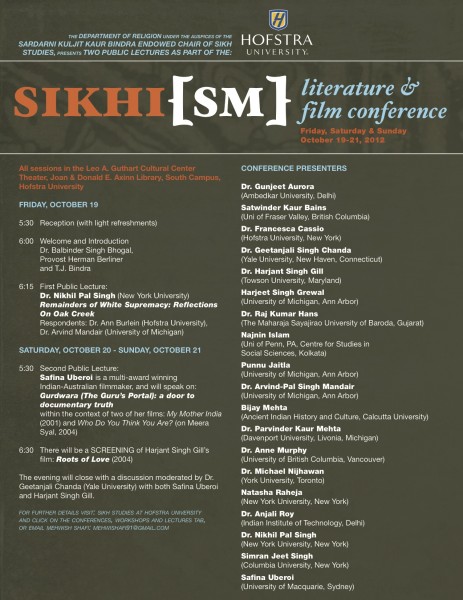 Paper presentations will be given during five sessions, with presentations ranging from de-categorizing the janamsakhis to the poetry of Puran Singh, discourses on secularism to literary representations of Sikhs, Sikh masculine identity vis-à-vis kesh and the dastaar to Panjabi theater, Museum exhibitions to Sikh identity in film and Bollywood, Hip Hop and rap as expressive forms among Panjabi youth to Gurbani sangeet and female kirtaniya. Presentation topics and bios can be accessed via the Sikh Studies website at Hofstra.
Paper presentations will be given during five sessions, with presentations ranging from de-categorizing the janamsakhis to the poetry of Puran Singh, discourses on secularism to literary representations of Sikhs, Sikh masculine identity vis-à-vis kesh and the dastaar to Panjabi theater, Museum exhibitions to Sikh identity in film and Bollywood, Hip Hop and rap as expressive forms among Panjabi youth to Gurbani sangeet and female kirtaniya. Presentation topics and bios can be accessed via the Sikh Studies website at Hofstra.
This year the conference will also host two supplementary film screenings and offer a forum to deepen the discourse around the recent Oak Creek Massacre. The films include Safina Uberoi’s ‘Gurdwara: the Guru’s Portal: a door to document Truth’ and Harjant Gill’s ‘Roots of Love,’ while the pieces related to Oak Creek include Dr. Nikhil Pal Singh’s ‘Remainders of White Supremacy,’ and Dr. Balbinder Singh Bhogal’s ‘Oak Creek Killings: The Denial of a culture of oppression’ (which can be read online).
Guest blog by: Rocco
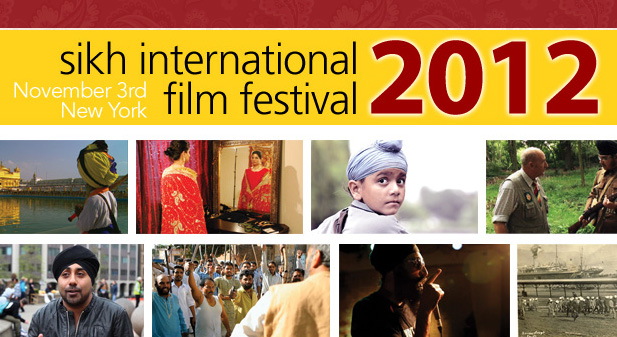 One of the highlights of fall in NYC is the Sikh Arts and Film Festival which showcases the story of our community via films and is being held November 2-3, 2012. Along with that is a Heritage Gala which is being held November 3, 2012 “to celebrate the rich heritage, culture and traditions of the Sikhs.” In the past dignitaries and business leaders have been selected as Chief Guest and Guest of Honors. Unfortunately, The Chief Guest this year is Nirupama Rao, India’s Ambassador to the United States and the Guest of Honors include Prabhu Dayal, Consul General India, New York and Hardeep Puri, India’s Permanent Representative to the United Nations.
One of the highlights of fall in NYC is the Sikh Arts and Film Festival which showcases the story of our community via films and is being held November 2-3, 2012. Along with that is a Heritage Gala which is being held November 3, 2012 “to celebrate the rich heritage, culture and traditions of the Sikhs.” In the past dignitaries and business leaders have been selected as Chief Guest and Guest of Honors. Unfortunately, The Chief Guest this year is Nirupama Rao, India’s Ambassador to the United States and the Guest of Honors include Prabhu Dayal, Consul General India, New York and Hardeep Puri, India’s Permanent Representative to the United Nations.
For some, Sikhs having Indian Government representatives as honorees poses no conflict and should be encouraged. One may argue that the attack on Darbar Sahib and Genocide in 1984 are distant events that occurred twenty eight years ago and should be forgotten. One may argue that the civil war which ensued for ten years afterwards in Panjab and led to the death of the tens of thousands of Sikh youth were collateral damage and justifiable in order to preserve the unity of India. One may argue that that struggle for an independent Panjab has reached its nadir and it’s important to “re-Indianize” ourselves and take advantage of the current economic environment.
Today is a federal holiday here in the United States — Columbus Day. Many of you probably share my disdain for the continued celebration of a man who helped kick off the colonization of the Americas and the genocide of indigenous peoples over 500 years ago, just as Guru Nanak was laying the groundwork for Sikhi to be born in Punjab. Gloating about his relentless pillaging, Columbus once stated, “I ought to be judged as a captain who for such a long time up to this day has borne arms without laying them aside for an hour.”
We Sikhs are truth-seekers and freedom fighters. Let’s stand with indigenous people throughout the Americas today, mourning those millions whose lives were taken by Columbus and the European colonizers who came after, and celebrating the spirit of resistance and quest for sovereignty which persist today throughout Turtle Island.
 Yesterday’s news about the attack on KS Brar has excited, angered, inspired, and agitated many Sikhs throughout the world.
Yesterday’s news about the attack on KS Brar has excited, angered, inspired, and agitated many Sikhs throughout the world.
Many have questioned the Indian media’s initial assumption, before even the facts had arrived. Still others are wondering if the news is even factual. I have seen numerous postings on social media, believing that the attack was just a fabrication in order to make Sikhs appear ‘violent’ and ‘extreme’, especially after the recent goodwill expressed by some channels in the US and abroad after the recent Wisconsin Massacre. Finally, our brothers and sisters at Naujawani have written an intriguing article asking larger questions about a more sinister timing of all events (though not sure if I agree, well worth a read!).
I believe that the case of Kulbir Singh Barapind and Daljit Singh Bittu is extremely important, but that warrants a separate post. I will return to that issue at a future time.
Personally I am quite surprised that no names have appeared yet, as I figure someone would probably take credit and I wouldn’t imagine the names could be held a secret for too long within the community, especially if those that confronted him were young, as the claim is being made. Still I think that I want to take this conversation in a different direction. How do we ‘present’ SikhISM and its implicationsi?
Over the last month since the horrific tragedy in Oak Creek, WI, Sikh civil rights organizations and other leaders in the community seem to have come to a consensus on what our collective demand should be to move forward — getting the FBI to track hate crimes against Sikhs. A few weeks ago Valarie Kaur wrote an op-ed in the Washington Post entitled, “Sikhs deserve the dignity of being a statistic,” in which she convincingly articulates the basic argument that many are making:
The FBI tracks all hate crimes on Form 1-699, the Hate Crime Incident Report. Statistics collected on this form allow law enforcement officials to analyze trends in hate crimes and allocate resources appropriately. But under the FBI’s current tracking system, there is no category for anti-Sikh hate crimes. The religious identity of the eight people shot in Oak Creek will not appear as a statistic in the FBI’s data collection. As a Sikh American who hears the rising fear and concerns in my community, I join the Sikh Coalition and Sikh American Legal Defense and Education Fund (SALDEF) in calling for the FBI to change its policy and track hate crimes against Sikhs.
We’ve all probably gotten numerous action alerts to sign petitions, call our Senators, and, most recently, to attend tomorrow’s Senate hearing on hate violence in Washington, DC. The Sikh Coalition’s email advisory today about tomorrow’s hearing begins, “Be Present and Request that the FBI Track Hate Crimes Against Sikhs.”
It seems like a sensible request. The FBI is a government agency responsible for investigating hate crimes, so of course they should be looking specifically at attacks targeting Sikhs and have a category to enable them to do so. While I am sympathetic to this cause, I am a bit troubled by it, or have some questions about it, as well.
While I am not necessarily against the idea of a Sikh box for the FBI to check in the case of a hate attack against a Sikh, I am very skeptical of the FBI being an agency capable of working in the best interests of our community. To put it directly, I don’t trust them. And I’m not sure there is any reason for our community at large to trust them. Isn’t trust a prerequisite to inviting someone with a whole lot of power and resources into your homes, your schools, your houses of worship?
 Co-blogged by Sanehwal and Mewa Singh
Co-blogged by Sanehwal and Mewa Singh
In an easily missed bit of North American Sikh intellectual bloodsport, IJ Singh and a graduate of UC Berkeley debated ideals about graduate education, the panth, and the academy. It is worth reading through for their different orientations towards the discussion, if at the very least to see how two people with very different positions in life (gender, education, class, age) interpret the issues at stake.
In IJ’s article, he mentioned the National Science Foundation Graduate Research Fellowship Program, an American government program that funds graduate research. I had to Wikipedia it. At the time I was an undergraduate interested in applying to PhD programs in the social sciences, and despite the wealth of resources at my university, I ended up scouring the internet for advice on how to successfully apply to doctoral programs that routinely get upwards of 400 applications for 5 or 6 seats. The National Science Foundation’s graduate research fellowship was part of the deluge of items to tackle: letters of recommendation, emails to potential advisors, picking programs, and the dreaded statement of purpose. To make matters worse, my primary advisor was on leave, and unlike many of my peers, I had few friends or places to turn where I felt comfortable getting honest and expert advice on how to craft applications that best demonstrated my accomplishments and abilities.
 The history of the Sikhs in the United States is known well in specific circles. Bhagat Singh Thind’s famous failed case for legal recognition by the US Supreme Court, iconic images of Stockton Gurdwara, traces of the Punjabi-Mexican experience, memories of the Ghadari Babas are generally remembered in this context. However, this is merely the tip of the iceberg.
The history of the Sikhs in the United States is known well in specific circles. Bhagat Singh Thind’s famous failed case for legal recognition by the US Supreme Court, iconic images of Stockton Gurdwara, traces of the Punjabi-Mexican experience, memories of the Ghadari Babas are generally remembered in this context. However, this is merely the tip of the iceberg.
A fascinating tale that is rarely discussed is that of Pahkar Singh. In our new post 9/11 fad to ad nauseam repeat that we are a “peaceful religion,” we tend to dismiss those heroic Sikhs that also faced racial discrimination in their own way. In the case of Pahkar Singh, the young Punjabi Sikh farmer living in the Imperial Valley (East of San Diego) in 1925. After being robbed of his crops and cheated by whites that took advantages of the racist laws in the land, Pahkar Singh picked up his gun and gandasa and killed two of them. He only stopped from killing a third, when the man’s 8 month pregnant wife, literally stood in the face of the barrel to protect her husband. At that point, Pahkar Singh turned himself in. At his defense, along with other Punjabi farmers, many even white small farmers came to sympathize with Pahkar Singh. He spent 15 years in San Quentin before he was released. It is these lesser known instances of the Sikh-American experience that I find so much more interesting.
In this vein, a number of Sikh organizations led by Stockton Gurdwara and the Sikh Information Centre have come together to host a series of events in celebration of the Sikh-American Centennial. Beginning on SEPTEMBER 22, , there are a series of events to commemorate, remember, and reflect on the Sikh-American focus. YOU DO NOT WANT TO MISS IT! With the recent events at Oak Creek Gurdwara, this may be a more prescient time than ever.
Guest blogged by Parvinder Mehta
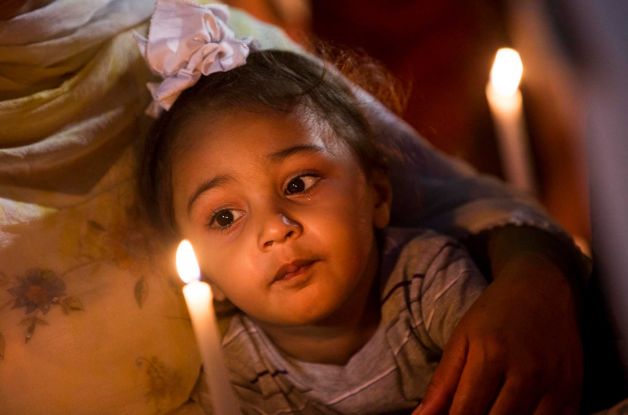 Amidst the barrage and frenzy of shock and surprise and the discussions about why the Sikh community has been targeted and victimized through history, I wonder how Sikh parents have tried to make sense of the massacre of six Sikhs and the suicide of the gunman who came with his hateful agenda to the Gurdwara in Wisconsin earlier this month. “How can one human kill another human being on purpose?” I am always haunted by this question. As a parent, I shudder at the thought of violence creeping up in our lives. It is tough explaining to your children why some people commit heinous crimes against innocent people and why some people do not like Sikhs or may have never known about Sikhs. Or explaining why a Michigan Gurdwara was vandalized last year and how ignorance can be a dangerous premise.
Amidst the barrage and frenzy of shock and surprise and the discussions about why the Sikh community has been targeted and victimized through history, I wonder how Sikh parents have tried to make sense of the massacre of six Sikhs and the suicide of the gunman who came with his hateful agenda to the Gurdwara in Wisconsin earlier this month. “How can one human kill another human being on purpose?” I am always haunted by this question. As a parent, I shudder at the thought of violence creeping up in our lives. It is tough explaining to your children why some people commit heinous crimes against innocent people and why some people do not like Sikhs or may have never known about Sikhs. Or explaining why a Michigan Gurdwara was vandalized last year and how ignorance can be a dangerous premise.
I knew I must tackle the endless questions that they would ask about why someone committed this heinous act. I knew I must not use any rhetoric of hate or fear when talking to my children, the same way as my parents had taught me. Terms like prejudice, bias, racism, and ignorance are part of my children’s vocabulary much sooner than I had hoped. As a teacher and a parent, as a proud and practicing Sikh, I have always shared the anecdotes from Sikh history with my children where courage, not fear, is the driving lesson. The crucial question that we, as Sikh American parents, are faced is how we reassure our children that such hate-driven incidents will never recur. What can we do as Sikh parents to promise our children a hate-free environment so they can assert their Sikh identities without fear?
This election year is a reminder that Sikh Americans need to participate more actively in civic and political life. In order for the government and the media to pay attention to issues affecting our community, we need to have a seat at the table where decisions are being made and ensure that our voice is included in any policy changes.
The following are two ways that individuals can take action to change law that would impact the lives of Sikh Americans in California. These actions are for individuals living in California, but similar actions can and will take place in other states at various times. California is the 8th largest economy in the world, so if these changes become law – then these actions are even more meaningful for the Sikh community. It will go down in history that Sikh Americans helped create change for not just our own community but other marginalized communities too.
The following two bills have already successfully passed through both the California Assembly and Senate. Much of the hard work has been accomplished thanks to advocates within the Sikh community, sangat members across the state and Sikh organizations such as The Sikh Coalition. The final step in this process is for Governor Brown to sign these bills into law. You can help by taking one small step for each bill – by simply contacting the Governor’s office. While Governor Brown has until September 30th to sign these bills into law, he can decide on the bills any day. We encourage you to take action today! Please leave a comment in the section below letting us know if you have taken action.
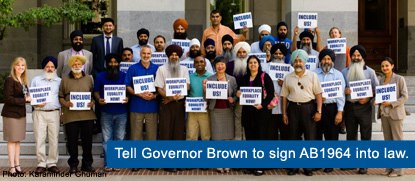 AB1964 – Workplace Religious Freedom Act: SIGN THE PETITION
AB1964 – Workplace Religious Freedom Act: SIGN THE PETITION
If this bill moves forward and becomes law, it will sharply reduce job discrimination against Sikhs and other religious minorities and guarantee equal employment opportunity to all workers in California.

SB1540 – Revised Curriculum Framework: History-Social Science: SIGN THE PETITION
This bill would authorize the State Board of Education to complete the revision process of the History-Social Science Framework for California schools. When completed, this framework will ensure that California students learn about Sikhism and Sikh contributions, thereby increasing appreciation for diversity and reducing ignorance of the sort that leads to bullying and bias.
We believe at the heart of each Sikh American woman, there are multiple love stories that inhabit the mind, body, and soul.
This one is for you dear Kaurs!
The first ever Sikh Women’s Love Anthology is being created and your voices are needed. This groundbreaking anthology will be a compilation of love stories written by and about Sikh women living in North America and will be published in the form of memoirs, creative non-fiction stories, and creative essays.
Sikh women have an incredible history of powerful and inspiring narratives – often heard through our oral tradition. This project is a way of documenting these narratives and providing a space for women in the Sikh community, connecting with one another to dialogue and document the complexities and nuanced experiences of love as we see it. Love can take many forms – “through lovers holding hands, singing a shabad, eating a good meal to nourish one’s body, hiking an unknown terrain, traveling a new country, holding a sick child close, fighting for civil and human rights or even embarking on the journey to falling in love with ourselves as women and human beings, spiritual beings” [from guidelines]. Love is at the core of our very existence as Sikhs.
This is a wonderful opportunity to pave the path for Kaur voices that we do not often hear. Sikh women who are dedicated to their families, their faith and their activism and manifest their love in dynamic ways. Yet their stories go unheard. Documenting one’s story provides for self-reflection and is “an act of resistance against social, cultural, media, and political forces that want to define women as less than humane“. This is an important way to chronicle narratives for future generations of Sikh American women and men.
Click below the break for submission details. For further information and full submission guidelines, please email sikh.lovestories[at]gmail.com.
Just a quick post to lighten your day. According to this new promo, the US Open is using Bhangra to promote the upcoming events.
The video was filmed a few days ago in Central Park by ESPN.
Bhangra was also part of the Olympics closing ceremony in London. It makes you wonder though – how can we get more Punjabi athletes represented in sports? And why the sudden interest in Bhangra… ?
Guest blogged by Amardeep Singh
Recently I found myself in the odd position of being, for a brief moment, a sort of spokesperson for the Sikh-American community in the wake of the terrible shootings at a Sikh Gurdwara in Wisconsin.

Page from the book, The Boy with Long Hair
It’s odd for me because I am a pretty secular Sikh, who doesn’t have an especially deep knowledge of Sikh history or theology. After my essay on “Being Sikh in America” appeared in the New York Times, a colleague at the university where I teach later invited me to give a talk on Sikhism for students at the university this fall, but I had to decline — I think others could probably do a better job. I also started saying no to interview requests and reprint requests once I felt that my main point — that we should be clear that we are “united against hate” had left its mark. And that’s just fine: while we are all still processing the horror of what happened in Oak Creek two weeks ago, it has been inspiring to see many positive and constructive voices from the Sikh community appearing in the American media.
The part that remains pressing for me as a parent is the issue I mentioned at the end of the post I wrote two weeks ago — how to talk to my children about either the immediate issue of racial and religious hostility, or even the broader question of how to educate them about Sikhism as a religion.
As I was raised, much of the heavy lifting with regards to religious education was done via Gurdwara Sunday school (in Silver Spring, MD), and various day camps for Sikh children. I don’t recall either of my parents actually sitting me down and saying, “ok, here is the story of Guru Nanak…” or anything along those lines. And as my own son becomes old enough to enroll in Sunday school at our own local Gurdwara, it’s tempting to simply continue that pattern to avoid certain uncomfortable questions (such as: “did that really happen, or is it make-believe?”). What is taught is often heavy on use of Janam Sakhis and a pretty narrow version of the accomplishments and doings of the various Gurus. And memorizing various numbers, names, and prayers: 10 Gurus, 5 Ks, Jap Ji Sahib. (No one succeeded, at that point, in teaching me much actual spoken Punjabi, so the memorization of Jap Ji Sahib was purely by rote — to impress the family back in India, maybe? I had very little idea of the meaning or context of anything I learned at Sunday school until I sought out that knowledge as an adult.)
Why isn’t that approach enough for me as a parent? Two reasons.
